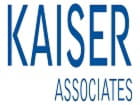Discovery Communications, Inc. (NASDAQ: DISCA, DISCB, DISCK) today reported financial results for the second quarter ended June 30, 2017.
Second Quarter Results
Second quarter revenues of $1,745 million increased 2% compared to the prior year, as 2% growth at U.S. Networks and 3% growth at International Networks were partially offset by a 4% decline at Education and Other. Adjusted Operating Income Before Depreciation and Amortization ("OIBDA")(1)increased 2% to $717 million, as 4% growth at U.S. Networks was partially offset by a 4% decline at International Networks. Excluding currency effects, second quarter total Company revenues and Adjusted OIBDA grew 3% and 2%, respectively.
Second quarter net income available to Discovery Communications, Inc. ("DCI Net Income") decreased 8% to $374 million, as improved operating results and lower restructuring charges were more than offset by currency-related transactional losses vs. gains in the prior year and increased losses from equity investees. Our solar investments again had a negative impact on net income for the second quarter but are still expected to have a positive impact on net income for the full year. Diluted earnings per share(2) decreased 3% to $0.64 due to lower DCI Net Income, partially offset by fewer shares outstanding. Adjusted Earnings Per Diluted Share ("Adjusted EPS")(1), which excludes the impact of amortization of acquisition-related intangible assets, decreased 4% to $0.68 for the second quarter 2017. Second quarter Adjusted EPS excluding currency effects increased 9%.
Free cash flow(3) decreased 48% to $157 million for the second quarter of 2017 as cash flow from operations decreased to $188 million while capital expenditures increased 11% to $31 million. Second quarter cash flow from operations decreased primarily due to the timing of working capital. Capital expenditures increased primarily due to timing and higher technology and infrastructure spending. Second quarter free cash flow excluding the impact of currency effects decreased 37%. For the last twelve months, free cash flow excluding currency was up 12% compared with the prior year comparable twelve month period.
U.S. Networks' revenues for the second quarter increased 2% to $890 million, driven by 4% distribution growth and relatively flat advertising growth. Distribution revenue growth was primarily driven by higher rates partially offset by a decline in subscribers and, to a lesser extent, the growth was driven by contributions from other distribution revenues. Other distribution revenues were comprised of content deliveries under licensing agreements. Advertising revenues were relatively flat, primarily due to higher pricing and continued monetization of our GO platform, partially offset by lower delivery and the impact of the Group Nine transaction(1). Excluding the impact of the Group Nine transaction, advertising revenues would have increased 1%.
Operating expenses decreased 2% mainly due to the Group Nine transaction. Excluding the Group Nine transaction, cost of revenue was consistent with the prior year and SG&A increased 1%. Adjusted OIBDA increased 4% to $567 million.
International Networks' revenues for the second quarter increased 3% to $811 million and Adjusted OIBDA decreased 4% to $236 million. Changes in foreign currency exchange rates reduced second quarter International Networks' revenue growth by 1% and increased Adjusted OIBDA growth by 1%. Excluding currency effects, total revenues increased 4%. Distribution revenues, excluding the impact of currency effects, grew 7%, mostly due to higher affiliate rates in Europe following further investment in sports content and higher affiliate rates in Latin America. This growth was partially offset by a comparison against a one-time contractual adjustment in Europe in the second quarter of last year. Advertising revenues, excluding the impact of currency effects, increased 1%, mostly due to higher ratings in Southern Europe, partially offset by lower ratings in Asia-Pacific and the Nordics.
Operating expenses increased 6%, or 8% excluding the impact of foreign currency exchange rates, primarily due to increased sports content and production costs.
Education and Other revenues for the second quarter decreased by $2 million primarily due to the impact of the sale of the Raw and Betty production studios, partially offset by increased revenues at the Education business. Adjusted OIBDA increased primarily due to the reduction in expenses as a result of the sale of the Raw and Betty production studios.
Corporate and Inter-Segment Eliminations
Adjusted OIBDA for the second quarter of 2017 declined primarily due to higher legal costs.
STOCK REPURCHASE
During the quarter, the Company, pursuant to its existing stock repurchase program, repurchased 9.1 million shares of its Series C common stock at an average price of $26.50 per share, for a total of $241 million. On May 11, 2017, the Company repurchased 1.1 million Series C convertible preferred shares from Advance/Newhouse Programming Partnership ("ANPP") at $53.41 per share (or $26.71 per share on an as converted to common basis), for a total of $60 million pursuant to the previously announced share repurchase agreement described below between the Company and ANPP. In total, the Company spent $301 million on share repurchases during the second quarter of 2017.
Through June 30, 2017, the Company had repurchased a total of 164.1 million shares of its Series C common stock and 2.8 million shares of its Series A common stock under its stock repurchase program. In aggregate, including the 35.5 million Series C convertible preferred shares acquired from ANPP and from Advance Programming Holdings, LLC, this represents $8.5 billion of the Company's shares since buyback activity was authorized in 2010, at an average price of $26.48 per share on an adjusted basis(1). Note that the aggregate share numbers have not been adjusted to reflect the stock dividend that was distributed in August 2014.
On May 22, 2014, the Company entered into a share repurchase agreement with ANPP to repurchase its shares of the Company's Series C convertible preferred stock, on a quarterly basis, in proportion to the Company's repurchases under its stock repurchase program in a manner that is intended to maintain ANPP's current ownership percentage of the Company. This agreement was amended by letter agreement on August 25, 2014.
OTHER ITEMS
In a separate release distributed today, Discovery and Scripps Networks Interactive, Inc. ("Scripps") announced the execution of a definitive agreement and plan of merger between Discovery and Scripps in a cash and stock transaction valued at $14.6 billion, or $90 per share, including the assumption of Scripps' debt. The transaction, which is expected to close by early 2018, is subject to approval by Discovery and Scripps' shareholders, regulatory approvals, and other customary closing conditions. Please refer to the transaction press release for additional details.
FULL YEAR 2017 OUTLOOK(2)
Discovery will provide forward-looking guidance in connection with this quarterly earnings announcement on its quarterly earnings conference call and webcast referenced hereafter.
| (1) | The average repurchase price was calculated by dividing a) the aggregate amount spent on share repurchases since the inception of share repurchases in 2010 ($8.5 billion) by b) the number of shares that would have been repurchased if the Series C Common Stock special dividend paid on August 6, 2014 occurred prior to the inception of share repurchases in 2010. For each common share repurchased prior to August 6, 2014, we assume one additional share of Class C Common Stock was repurchased for no additional consideration. For each Series C convertible preferred share repurchased, we assume each preferred share would have converted into two Series C common shares. |
| (2) | Discovery is unable to provide a reconciliation of the forward-looking guidance to GAAP measures as, at this time, Discovery cannot determine the adjustments that would be required, including those related to fluctuations in foreign currency exchange rates. |
NON-GAAP FINANCIAL MEASURES
In addition to the results prepared in accordance with U.S. generally accepted accounting principles ("GAAP") provided in this release, the Company has presented Adjusted OIBDA, Adjusted EPS and free cash flow. These non-GAAP measures should be considered in addition to, but not as a substitute for, operating income, net income, earnings per diluted share and other measures of financial performance reported in accordance with GAAP. Please review the supplemental financial schedules beginning on page 10 for reconciliations to the most comparable GAAP measures.
Adjusted OIBDA and Adjusted OIBDA Excluding the Impact of Currency EffectsThe Company evaluates the operating performance of its segments based on financial measures such as revenues and Adjusted OIBDA. Adjusted OIBDA is defined as operating income excluding: (i) mark-to-market share-based compensation, (ii) depreciation and amortization, (iii) restructuring and other charges, (iv) certain impairment charges, (v) gains and losses on business and asset dispositions, and (vi) certain inter-segment eliminations related to production studios. As of January 1, 2017, the Company no longer excludes amortization of deferred launch incentives in calculating total Adjusted OIBDA as this expense is not material.
The Company uses Adjusted OIBDA to assess the operating results and performance of its segments, perform analytical comparisons, identify strategies to improve performance and allocate resources to each segment. The Company believes Adjusted OIBDA is relevant to investors because it allows them to analyze the operating performance of each segment using the same metric management uses. The Company excludes mark-to-market share-based compensation, restructuring and other charges, certain impairment charges, and gains and losses on business and asset dispositions from the calculation of Adjusted OIBDA due to their volatility. The Company also excludes depreciation of fixed assets and amortization of intangible assets as these amounts do not represent cash payments in the current reporting period. Additionally, certain corporate expenses and inter-segment eliminations related to production studios are excluded from segment results to enable executive management to evaluate segment performance based upon the decisions of segment executives. Refer to page 6 for our methodology for calculating growth rates excluding the impact of currency effects.
Adjusted EPS and Adjusted EPS Excluding the Impact of Currency EffectsAdjusted EPS is defined as earnings excluding the impact of amortization of acquisition-related intangible assets per diluted share. Note that given the change in conversion ratio for our preferred stock, the preferred shares are now only included in the diluted share count. The Company believes Adjusted EPS is relevant to investors because this metric allows them to evaluate the performance of the Company's operations exclusive of the non-cash amortization of acquisition-related intangible assets that impact the comparability of results from period to period. Refer to page 6 for our methodology for calculating growth rates excluding the impact of currency effects.
Free Cash Flow and Free Cash Flow Excluding the Impact of Currency EffectsThe Company defines free cash flow as cash provided by operating activities less acquisitions of property and equipment. The Company uses free cash flow as it believes it is an important indicator for management and investors of the Company's liquidity, including its ability to reduce debt, make strategic investments and return capital to stockholders. Refer to page 6 for our methodology for calculating growth rates excluding the impact of currency effects.
Methodology for Calculating Growth Rates Excluding the Impact of Currency EffectsThe impact of exchange rates on our business is an important factor in understanding period-to-period comparisons of our results. For example, our international revenues are favorably impacted as the U.S. dollar weakens relative to other foreign currencies, and unfavorably impacted as the U.S dollar strengthens relative to other foreign currencies. We believe the presentation of results on a constant currency basis ("ex-FX"), in addition to results reported in accordance with GAAP, provides useful information about our operating performance because the presentation ex-FX excludes the effects of foreign currency volatility and highlights our core operating results. The presentation of results on a constant currency basis should be considered in addition to, but not a substitute for, measures of financial performance reported in accordance with GAAP.
The ex-FX change represents the percentage change on a period-over-period basis adjusted for foreign currency impacts. The ex-FX change is calculated as the difference between the current year amounts translated at a baseline rate (which is based on a spot rate for each of our currencies determined early in the fiscal year as part of our forecasting process) (the "2017 Baseline Rate") and the prior year amounts translated at the same 2017 Baseline Rate. In addition, consistent with the assumption of a constant currency environment, our ex-FX results exclude the impact of our foreign currency hedging activities as well as realized and unrealized foreign currency transaction gains and losses. Results on a constant currency basis, as we present them, may not be comparable to similarly titled measures used by other companies.















